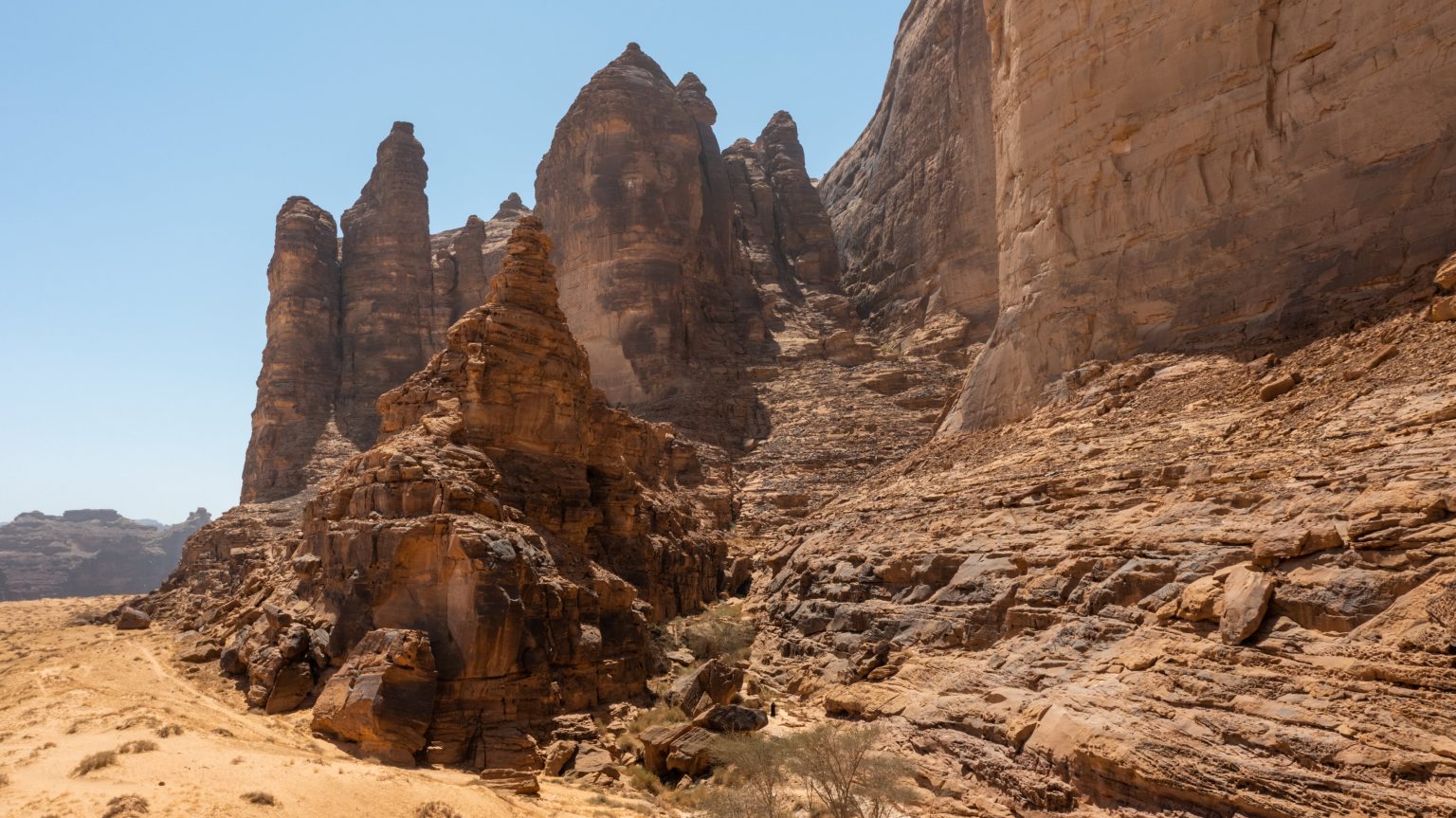- Inscribed on the UNESCO Memory of the World Register for its rock carvings which reflect daily life in the Dadanite Kingdom
- AlUla’s Jabal Ikmah contains the largest concentration of Dadanitic inscriptions in the world
AlUla, Saudi Arabia-: The Royal Commission for AlUla (RCU)’s efforts to conserve the region’s documentary heritage have been acknowledged with the listing of Jabal Ikmah on UNESCO’s Memory of the World Register.
The spectacular mountain and its sandstone canyons feature more than 300 historically significant carved inscriptions, most of which date from the second half of the first millennium BCE. The site features the largest collection of inscriptions recording the ancient Dadanite Kingdom’s religious rituals, daily activities, and relations with neighboring peoples.
As part of its role in delivering Saudi Arabia’s Vision 2030, RCU is heavily investing in the study and conservation of sites such as Jabal Ikmah, an open-air library situated in the world’s largest living museum. These efforts to enhance the world’s understanding of Jabal Ikmah, while improving visitors’ access in a sustainable way, have contributed to this public affirmation by UNESCO of the magnitude and international significance of AlUla’s documentary heritage.
José Ignacio Gallego Revilla, Executive Director of the Kingdoms Institute, Archaeology, Heritage Research, and Conservation Department at the Royal Commission for AlUla, said: “The significance of Jabal Ikmah’s inscriptions transcends regional boundaries to reach the level of global relevance, in particular as part of the evolution of Old Arabic languages and dialects. Their authenticity and integrity, both for the information preserved about ancient societies as well as the conservation of the site, bring together the essentials that make this place unique for the Memory of the World as the chronicle of a lost time through the largest number of inscriptions in an Ancient North Arabian script.”
As a crossroads on the incense and pilgrimage routes, the AlUla oasis was a hub of commercial and cultural exchange. It hosted merchants of myrrh, frankincense, and other precious commodities. This cultural richness propelled the growth of settlements, including Dadan. The Dadanite Kingdom flourished and developed its own alphabet form of the South Semitic writing system. The Dadanites then recorded their history through petroglyphs carved into the sloping red and yellow sandstone rocks of AlUla. The greatest concentration of inscriptions is sheltered in the gorge of Jabal Ikmah, which is characteristic of AlUla’s jagged landscape formed by tectonic movements that date to the opening of the Red Sea 30 million years ago.
Many of Jabal Ikmah’s inscriptions reflect a variety of subjects such as rituals, kings, animals and agriculture, key to the story of AlUla’s past. Conservation of such landmarks is central to RCU’s vision for the future of AlUla, which emphasizes the region’s cultural heritage as both a beacon for tourism and a springboard for innovation and economic benefits that raise the quality of life for the community.
The listing builds on RCU’s existing partnership with UNESCO. RCU’s global network of partners for culture, which also includes ICOMOS, the Louvre Museum and the French Agency for the Development of AlUla (Afalula), plays a vital role in the regeneration of AlUla County as a leading global destination for cultural and natural heritage.
RCU is establishing the Kingdoms Institute as a global hub for archaeology, heritage research and conservation. Currently active as a research organisation, the institute will have a permanent base in the Dadan district of AlUla, a site that by 2035 is expected to be a prime destination for two million visitors a year attracted largely by its rich heritage.




